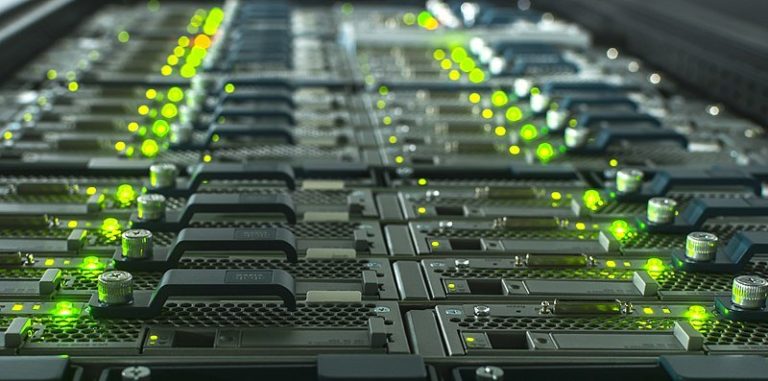2019’s IT Buzzwords You Need to Know
There is no denying it; our world is advancing, and rapidly as a matter of fact. Along with technological advancements comes an entire slew of new words, vocabulary, and terminology.
For those unfamiliar with the advancements that have been taking place, a lot of the viral words of 2019 may seem like jibberish. We are here to break down some popular information technology (IT) buzzwords into manageable pieces so that they are easier to understand and conceptualize.
IT does not need to be an overwhelming or challenging topic; deeper explanation with clear wording can help. The same goes for 2019’s IT buzzwords; once broken down into bite-sized, easy to understand bits, their meanings become evident.
Viral words of 2019
The pace of IT developments are progressing rapidly, so it can feel difficult to keep up with all of the new accomplishments and advances. This shortlist runs you through the IT buzzwords of 2019 you should know to be up-to-date with some of the most recent tech evolutions.
Artificial Intelligence
Sometimes referred to as merely ‘AI’, artificial intelligence is a term that can be seen extensively amongst tech news and other scientific developments. In short, artificial intelligence represents any machinery or software that is capable of human-like results and functions.
Artificial intelligence machines and software are sometimes even capable of learning as they operate, through a system of what is called artificial neural networks. The function of these self-learning devices is termed machine learning and it continues to pop up more and more in modern technological set-ups. Machine learning and artificial neural networks can be utilized to produce highly accurate results in an absurdly fast manner, as well as recognizing threats and challenges that would have gone overlooked by other, less complex networks or by human eyes.
Artificial intelligence can also refer to robots that are capable of learning as they operate. For this reason, there are some individuals that actually fear the future capabilities of artificial intelligence (AI), but for the time being it seems the applications of these devices are especially beneficial and advantageous.
Present-day examples:
Personal assistant programs (Alexa, Siri, Echo)
Social media face recognition software (Facebook)
Ridesharing applications (Uber, Lyft)
Email spam filters
Blockchain
There is a highly likely chance you have heard of Bitcoin. This buzzy term has grown to become the world’s most successful, albeit fragile cryptocurrency that has either garnered extreme enthusiasm, a complete dislike of, or indifference towards.
With cryptos such as Bitcoin growing to such mass popularity and profitability, there had to be a standard set into place. This is where the term blockchain comes into play.
Blockchain is, for example, what keeps Bitcoin traders from getting ripped off, by monitoring every transaction and maintaining strict records of all exchanges of Bitcoin. Everyone can see this transaction history, which is open source and available to anyone who wishes to glance upon the comings and goings of this cryptocurrency. Additionally, blockchain is naturally encrypted, which gives users a further sense of security.
This unique and clever system prevents counterfeit Bitcoin from being traded, which increases the cryptocurrency’s reputability and trustworthiness, but blockchain is not only limited to Bitcoin. In fact, this system can be set into place for any cryptocurrency and is often the structure of choice opted for. This new database is even being considered for use in banking and medical storage. Blockchain allows successful Bitcoin traders and other crypto collectors to rejoice, so be it that their trades are going well.
Mobile-First
Mobile-first is not exactly a new concept, and not as much a buzzword as it is a business model and developmental concept. In a world where the internet was first designed for desktop and then laptop use, it was not until the last decade with the release of the iPhone, one of the world’s most popular smartphones, that mobile compatibility became a high priority.
What mobile-first refers to now is a business model in which websites, applications, and other programs are developed first for use on mobile devices, and then afterward produced for computer use.
Even if companies are not agreeing to mobile-first philosophies, they are at least almost always assenting to mobile inclusive developments, because those that choose not to include mobile visitors in their demographics are asking to go out of business in this modern world.
Present-day examples:
These mega-companies are only a few that have taken on the mobile-first mindset.
Lululemon
Walmart
Domino’s
bareMinerals
3D Alteration
Since the arrival of 3D printers, this practice, sometimes referred to as additive manufacturing, has taken a number of industries by storm. Items and objects are produced through the generation and build-up of one layer after another, leading to a multi-dimensional final result that is tangible, unlike the 2D nature of most printed copies.
A number of materials can be created through 3D alteration, from metal, plastic, food, and housing to even human tissue. Due to its wide range of applications, both wealthy companies and startups have turned towards this technology to produce their desired results.
Present-day examples:
Nike
Ford
Boeing
MakieLab
DIY Rockets
General Electric
Internet of Things
The Internet of Things, also known as IoT, is a web of connections between machines, computing devices, people, and even animals that interact amongst one another to produce specific functions. Unique identifiers are created (UIDs), which then make it possible for data to be transmitted across networks without the need for human interaction with other humans or with computers.
This interrelatedness between machines and man has expanded across a multitude of industries, from wearables and mobile devices to auto, home, and environmental applications.
Present-day examples:
Home security systems
Smart electronic appliances
Household and commercial lights and thermostats
Speaker systems
Vending machines
Cars
Quantum Computing
Quantum computing is a method of data analysis in which computers become more capable of solving complex problems through the utilization of quantum bits, known as qubits. Compared with classic electronic selections that use the two defined states of either 0 or 1 known as binary digits or bits, this alternative is much more versatile but it presently has its limits.
As technologies continue to advance into the future, it can be expected that further applications for quantum computing will become a reality. Companies such as NASA are already interested in quantum computing in order to map mass amounts of data, such as information they compile pertaining to the universe. It doesn’t get much more vast than that!
Virtual Reality (VR)/Augmented Reality (AR)
Virtual Reality (VR) and Augmented Reality (AR) are closely related terms. Augmented Reality is, in some ways, a more simplified version of Virtual Reality, in which computer-generated aspects such as GPS data, various sounds, and videos are implemented alongside aspects of the real world. Probably the most accessible example of AR would be an application such as Pokemon Go. This game uses user location and positioning in order to create the map of the game, while applying its own computer graphics, such as when various Pokemon appear onto the screen.
Virtual Reality takes AR a step further by greater interacting with user senses. With Virtual Reality, you can essentially feel as if you have stepped into a completely different world, a digital yet highly real feeling version of whatever you would like to experience.
VR typically requires the consumer to wear sound-canceling headphones along with VR goggles. Sometimes arm toggles are also used to control the hand movements within the virtual world. The combination of these elements furthers the gamer experience by blocking them away from the outside world as much as possible.
In addition to providing an intriguing and realistic gaming experience, VR is also utilized for simulations in occupations that require expert training such as flying planes, surgery, and other complicated processes.
Immersive Experience
Related to VR and AR, these two aforementioned terms are actually considered a part of the immersive experience. An immersive experience is any type of circumstance that completely encompasses and engulfs the senses, as to take you away from reality for a moment and leave you feeling as if you actually exist within another world.
In truth, immersive experiences do not only need to relate to technology. Any event or undergoing that places you into what feels like an alternate universe for a moment of time is, by definition, an immersive experience. Attending an art show or concert, exercising, or focusing in a classroom can all fall under this category of being immersive.
Data Mining
Data mining is mostly how it sounds; this process is the discovery of the paradigms existent amongst mass amounts of data and information. Data mining alone does not involve the actual process by which data is mined, rather it is the overall concept. Instead, techniques used to mine data are described differently.
Some common techniques used in data mining include personalization, artificial intelligence (which we discussed earlier on), machine learning, and actionable analytics.
Net Neutrality
Net neutrality is not only a tech concept but is also tied in with political and governmental aspects. This term is the belief that all data and information available on the internet should be treated in the exact same manner, regardless of the government organization or the internet provider connected.
All tied into the idea of internet privacy, companies and government organizations can collect and track data to then pay money in order to prioritize their Internet traffic over another’s.
What this means, is that if an internet provider were to begin their own movie or music streaming company, the advertising and promotion of that service would then take priority over other established providers such as Netflix or Spotify, leading to a biased selection for potential customers.
Discussions about net neutrality are especially prominent currently in the United States, so those who reside in the US are encouraged to read more about the topic and gain a greater education on what it means to be net neutral.
Popular IT Buzzwords You Need to Know in 2019: Conclusion
Popular IT buzzwords of this year need not be overwhelming. In reality, for the average individual, these terms aren’t necessary to understand in great depth and detail but the general concepts can be valuable to grasp. Aside from this minute list of terms to know, with all of the tech advances happening each day it merely is not possible to keep up, but one can do their best and try to be as educated as possible.
Have you been looking for IT schools or career colleges in San Diego? ICOHS is a non-profit vocational school and affordable school for IT offering programs to become a computer network technician, IT network specialist, or IT systems administrator.
Do any of these career paths sound right up your alley? Our dedicated IT educators are passionate about assisting students in the fulfillment of their career goals. Reach out to us today and request more information.









